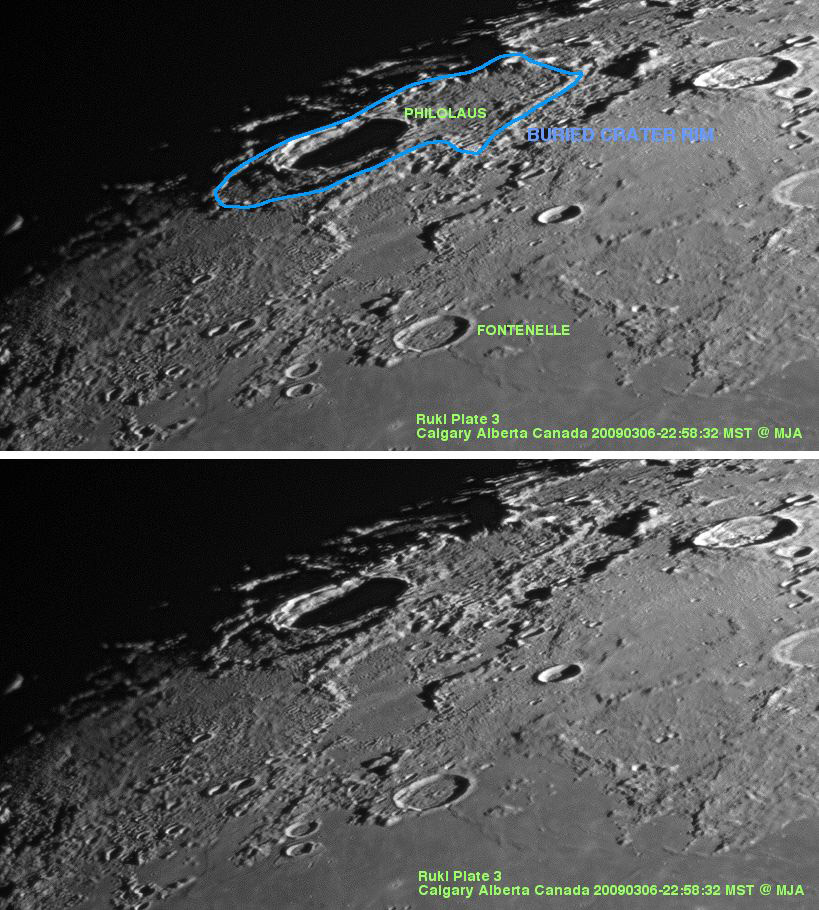March 13, 2009
Finding the Past

image by Milton J. Aupperle, Calgary, Alberta, Canada
While processing this razor sharp image of the Philolaus region, Milton detected a possible more ancient ring under it. This is an area blanketed by ejecta from Imbrium, accounting for all the shallow, filled in craters, and the paucity of old medium sized ones. There definitely are craters buried to different levels -for example, the one under the blue words Crater Rim is just barely detectable. But is the outline drawn by Milton a likely ancient crater or just a collection of arcuate parts that our eyes assemble into a non-existent feature? As we learned decades ago the best way to interpret the limb is by looking at images from overhead. That is now easy to do with the online Chuck Wood
Technical Details
2009 March 6, 22:58:32 Mountain Standard Time from Calgary Alberta. Celstron 8", 5,000 mm focal length with Televue 2.5x, 1384 x 1036 pixel Grasshopper 16 bit FireWire 800 camera with Green filter. Astro IIDC for image capture, stacking, and image processing. Best 108 frames out of 750 frames selected and then 103 MAP selections used for final alignment.
Related Links
Rükl plate 3
COMMENTS?
Click on this icon File:PostIcon.jpg at the upper right to post a comment.



